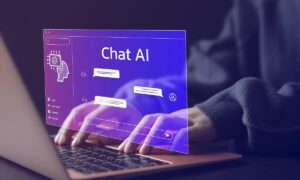In today’s rapidly evolving world, the power of artificial intelligence is revolutionizing industries across the board. When it comes to education, AI has the potential to transform how data is analyzed and decisions are made in order to improve student outcomes. Join us as we explore how AI can unleash its full potential in educational data analysis and decision-making, ushering in a new era of innovation and success for students and educators alike.
Introduction to AI and Educational Data Analysis
In recent years, the field of education has seen a rapid increase in the use of Artificial Intelligence (AI) for data analysis and decision-making. AI has revolutionized the way educators collect, analyze, and interpret data, leading to more informed and effective decision-making processes.
But what exactly is AI? Simply put, AI is a branch of computer science that focuses on creating intelligent machines that can think, learn and solve problems like humans. It involves developing algorithms that enable computers to process large amounts of data, recognize patterns and make predictions based on them. In education, this technology has been applied to learning analytics – the collection, measurement, analysis and reporting of data about learners.
With the growing availability of educational technologies such as online courses, virtual classrooms and personalized learning platforms, there is an ever-increasing amount of educational data being generated every day. This presents both challenges and opportunities for educators – while it becomes difficult to manually sift through this vast amount of information to identify areas for improvement or track student progress accurately; it also holds immense potential for improving teaching practices and enhancing students’ learning experience.
This is where AI comes into play. By using advanced machine learning algorithms AI-enabled tools can make sense out of diverse sets of educational data. These tools are able to detect patterns in students’ behavior such as study habits or engagement levels which could be key indicators for future success rates. They can also track individual progress against class averages allowing teachers to provide instant feedback on areas needing improvement ultimately leading towards better outcomes.
Basics of Educational Data Mining
Educational Data Mining (EDM) is a relatively new field that combines techniques and tools from data mining, machine learning, and statistics to analyze educational data. This emerging discipline has gained significant traction in the education sector due to its potential to extract valuable insights and patterns from large datasets generated by educational systems.
At its core, EDM aims to improve teaching and learning by providing evidence-based decisions through the analysis of academic data. This process involves collecting, cleaning, processing, organizing, interpreting, and representing educational data for decision-making purposes. The ultimate goal of EDM is to support stakeholders in making informed decisions by identifying patterns or trends in the data.
The Basics of Educational Data Mining include several key processes that are essential for successful implementation. These processes are:
1. Data Acquisition: In order to use EDM effectively, it is crucial to gather reliable and relevant data from various sources such as student information systems, learning management systems, surveys, assessments results, attendance records, among others. It is essential to ensure that data collection methods adhere to privacy laws and ethical considerations.
2. Data Preparation: Once the data has been collected, it needs to be cleaned and processed before being analyzed. This process involves identifying missing values or errors in the dataset and taking necessary steps like imputation or removal of outliers.
3. Data Exploration: After preparing the dataset for analysis, exploratory analysis techniques can be used to get an overview of the available variables’ relationships within the dataset. This step helps identify any unusual patterns or outliers within the data.
4. Predictive Modeling: Once all preparation steps have been completed successfully; predictive modeling techniques can be implemented on the dataset resulting in identifying insight into future behaviors based on past experiences.
5. Visualization of Results: Communicating results effectively is vital for decision-makers who do not possess any background knowledge about analytics techniques; this where well-designed visualizations come into play helping stakeholders understand complex findings quickly.
6. Interpretation and Decision Making: After analyzing the data and communicating the results, stakeholders need to interpret the findings and make decisions based on these insights. This stage is the most crucial one, as it determines whether the EDM process was valuable or not.
The Role of AI in Education: Benefits and Challenges
Artificial Intelligence (AI) has become a crucial technology in various industries, including education. In recent years, there has been a significant interest in the use of AI in educational data analysis and decision-making processes. This innovative technology has the potential to transform traditional teaching methods and bring about more personalized learning experiences for students. However, like any new technology, there are also challenges that need to be addressed when implementing AI in education.
Benefits of AI in Education
One of the most significant benefits of using AI in education is its ability to provide personalized learning experiences for students. Through machine learning algorithms, AI can analyze vast amounts of data on student performance and behavior to identify patterns and tailor instruction accordingly. This results in a more individualized approach to teaching that meets each student’s unique needs and abilities.
Moreover, with the help of AI-powered virtual assistants, teachers can reduce their administrative workload by automating tasks such as grading assignments and providing feedback. This allows them to focus on delivering quality instruction and spending more time interacting with their students.
Another benefit of leveraging AI in education is its ability to make data-driven decisions. By collecting data on student performance, engagement, and other factors, educators can gain valuable insights into how they can improve their teaching strategies. With this information at hand, they can create targeted interventions for struggling students or develop new instructional approaches for challenging topics.
Challenges Facing the Implementation of AI in Education
While the benefits of using AI in education are evident, there are also some challenges that need to be considered.
Firstly, there may be concerns over privacy when it comes to collecting sensitive student data necessary for AI-powered systems’ proper functioning. Schools must implement strict security measures to protect student information from cyber threats.
Secondly, implementing any new technology requires significant investment from schools or educational institutions. The cost associated with adopting an AI system might not be feasible for all schools, limiting their access to the benefits it offers.
There is also a potential risk of AI reinforcing biases in education. If the algorithms used in AI systems are biased, then students from marginalized communities might not receive equal opportunities and could face further discrimination.
Real-world Examples of AI in Educational Data Analysis and Decision-making
Artificial Intelligence (AI) is rapidly changing the landscape of education, and one area that has seen significant growth is in data analysis and decision-making. Schools and educational institutions are under enormous pressure to improve student outcomes while also managing limited resources. With the help of AI, they can now leverage vast amounts of data to make informed decisions that benefit both students and educators. Let’s take a look at some real-world examples of how AI is being used in educational data analysis.
1. Personalized Learning: One prominent example of AI use in education is personalized learning platforms such as Knewton, which uses machine learning algorithms to identify and address individual students’ learning needs. By analyzing student performance data from various sources, including quizzes, homework, and past tests, Knewton creates tailored study plans for each student. This approach has shown great promise in improving academic outcomes by providing students with targeted instruction based on their strengths and weaknesses.
2. Predictive Learning Analytics: Another vital application of AI in education is predictive learning analytics, which uses historical data to forecast a student’s future academic performance accurately. These systems analyze factors such as attendance records, grades, behavior patterns, and course completion rates to predict a student’s likelihood of success or failure. Educators can then intervene early on if necessary to provide additional support to struggling students.
3. Intelligent Tutoring Systems: Intelligent Tutoring Systems (ITS) create adaptive learning environments using sophisticated algorithms that mimic human teaching methods more closely than traditional computer programs do. Such systems can analyze previous interactions with students through exercises or questions answered incorrectly and adapt subsequent lessons accordingly.
4. Student Retention: AI-powered retention models can help educators identify red flags like frequent absences or deteriorating grades that signal a student may be at risk for dropping out before it happens officially. This proactive approach allows educators to address potential problems before they escalate.
5.Anomaly Detection: Anomaly detection systems use advanced statistical methods to identify patterns in data that do not conform to the norm. In education, these systems can be used to detect potential plagiarism in student essays or identify instances of cheating on exams, helping maintain academic integrity.
Ethical Considerations in Using AI for Education
In recent years, there has been a growing interest in the use of Artificial Intelligence (AI) in various industries, including education. With AI’s capability to rapidly analyze large amounts of data and make decisions based on algorithms, it has the potential to greatly impact the educational landscape. However, as with any technology, there are ethical considerations that must be addressed when using AI in education.
One of the primary concerns surrounding AI in education is its potential bias. AI systems are only as unbiased as the data they are trained on. If the data used to train an AI system contains biased information or reflects societal biases, then this will inevitably influence the decisions made by the system. For example, if an AI program is used to recommend courses or career paths for students based on their academic performance and interests but has been trained on biased data that favors certain demographics over others, it could perpetuate existing inequalities and discrimination in education.
Another ethical consideration is privacy and data protection. To effectively use AI for educational purposes, vast amounts of student data need to be collected and analyzed. This raises concerns about how this sensitive information will be stored, shared, and protected from potential breaches or misuse by third parties.
Additionally, there is a concern about transparency and accountability in decision-making processes involving AI systems. Unlike humans who can explain their reasoning for making a particular decision, it can be challenging to understand how an algorithm came up with a specific recommendation or solution. This lack of transparency can lead to mistrust from students and educators alike.
Furthermore, there is also a fear that increased reliance on AI may replace human teachers’ role in education entirely. While AI can provide valuable insights and help streamline administrative tasks for teachers, it cannot replace the human connection and personalized attention that teachers provide to their students.
To address these ethical considerations surrounding AI use in education, it is crucial to involve diverse perspectives at all stages – from designing algorithms to implementing them in educational settings. This includes involving educators, students, and experts in AI ethics to ensure that bias is minimized, privacy concerns are addressed, and decision-making processes are transparent. Additionally, regular audits and assessments of AI systems can help identify and correct any biases or issues that may arise.
Future Implications of AI in Education
The future implications of AI in education are vast and have the potential to greatly impact the way we teach, learn and make decisions in the education system. With the rapid advancement of technology and data analytics, AI has become an integral part of educational institutions. In this section, we will discuss some of the key areas where AI is expected to revolutionize education in the future.
One of the major implications of AI in education is personalized learning. With AI-powered systems, teachers can create adaptive learning experiences for students based on their individual needs and learning styles. This means that every student will receive a customized learning experience tailored specifically to their strengths, weaknesses, and interests. This not only improves academic outcomes but also motivates students to engage more actively in their studies.
Moreover, AI can help in identifying struggling students at an early stage by analyzing data on their academic performance and behavior patterns. This allows teachers to provide targeted interventions to support these students before they fall behind academically.
Another aspect where AI can have a significant impact is assessment and feedback. Currently, grading and providing feedback on assignments and exams can be time-consuming for educators. However, with AI-powered grading systems, teachers can save time and effort by automating this process while still maintaining accuracy. Moreover, these systems also analyze student responses to identify common misconceptions or knowledge gaps that need to be addressed.
AI also has great potential in revolutionizing higher education through online courses powered by intelligent tutoring systems (ITS). These ITSs use natural language processing (NLP) algorithms to provide personalized instruction based on each learner’s cognitive profile. This enables continuous learning anytime and anywhere without being limited by geography or traditional course schedules.
Furthermore, as technology continues to evolve rapidly, there will be a growing demand for workers with skills related to AI such as programming machine learning algorithms or managing data sets collected from various sources within educational institutions. Hence, incorporating AI into curricula could help prepare students for future careers in this field.
However, the increasing use of AI in education also raises concerns about ethical implications and data privacy. Thus, it is crucial to have proper guidelines in place to ensure the responsible use of AI and safeguard student data privacy.
Conclusion
As we continue to move towards a more technology-driven world, integrating AI in educational data analysis and decision-making has the potential to greatly enhance our education systems. By harnessing the power of AI, educators can gain valuable insights into student performance and make informed decisions that will benefit both students and teachers alike. With proper implementation and ethical considerations in place, this advancement has the potential to truly transform the landscape of education for the better. Let us embrace this change and work towards a more efficient, effective, and equitable education system with the help of AI.



































